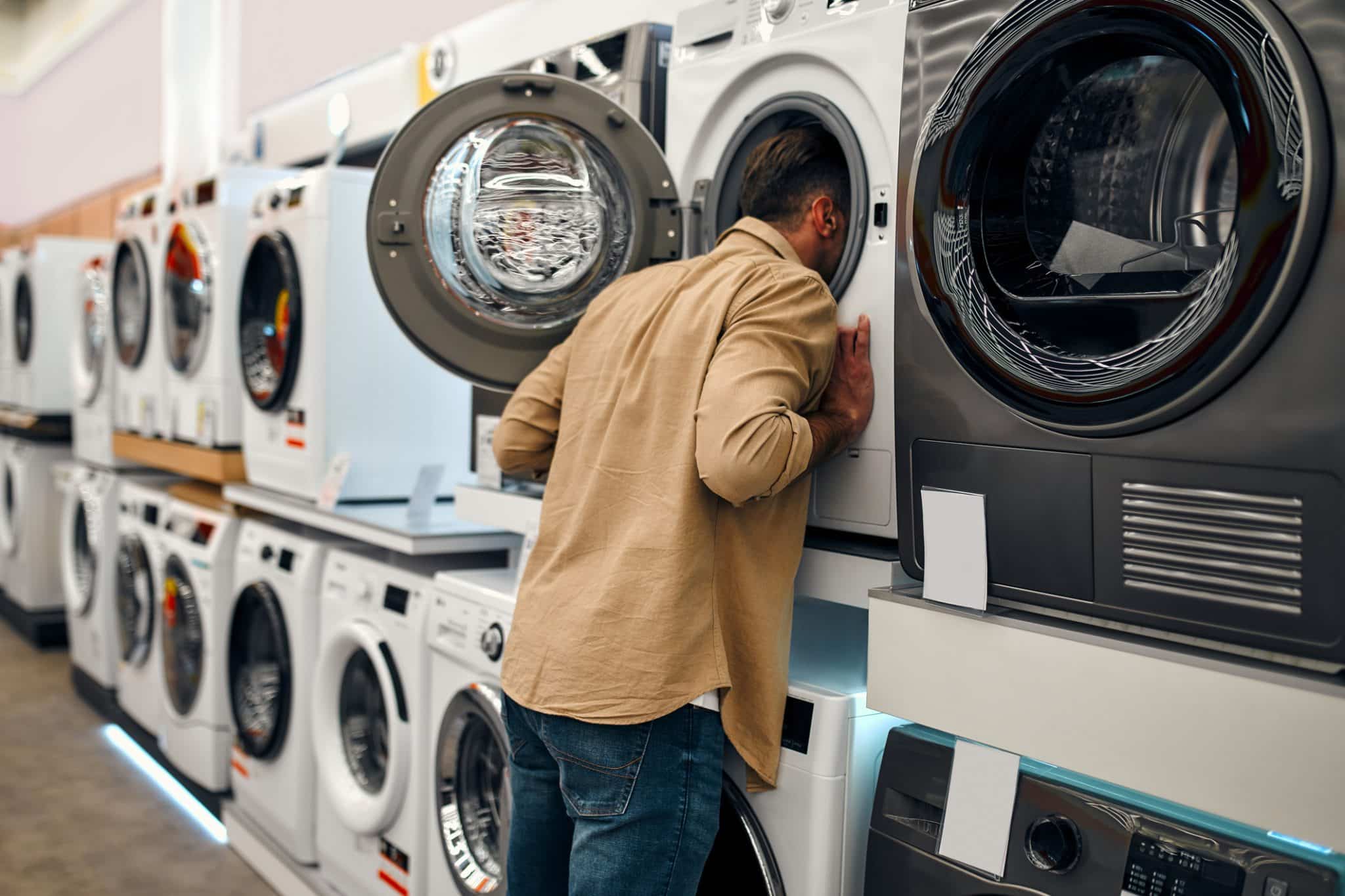If you’ve ever cringed at your utility bill after a month of heavy laundry loads, you’re not alone. Traditional clothes dryers are notorious energy hogs, often ranking as one of the most power-hungry appliances in a home.
But what if there was a way to dry clothes efficiently without the energy drain? Enter heat pump clothes dryers—an innovative solution that promises to slash energy consumption while keeping your clothes fresh and dry.
But do heat pump dryers really save energy? And if so, how much? Let’s break it down, compare them to traditional dryers, and see how appliance rebates—like those under the Inflation Reduction Act—can help make this energy-saving switch more affordable.
What Makes Heat Pump Dryers Different?
At first glance, a heat pump clothes dryer looks just like any other dryer. It’s a sleek, modern appliance with all the usual settings.
But inside, it operates entirely differently from traditional vented dryers.
Here’s how:
1. They Recycle Heat Instead of Wasting It
Traditional dryers pull in room air, heat it up using an electric or gas-powered element, and then vent the hot, moist air outside. That’s a lot of wasted energy.
Heat pump dryers, on the other hand, use a closed-loop system to capture and recycle heat. Instead of constantly generating new heat, they extract moisture from clothes using a refrigerant system and reuse warm air throughout the drying cycle. This process dramatically reduces energy consumption.
2. They Operate at Lower Temperatures
Traditional dryers blast clothes with high heat, often reaching temperatures between 135°F and 165°F. This can be tough on fabrics and wasteful in terms of energy use.
Heat pump dryers, by contrast, dry clothes at lower temperatures (usually around 100°F–120°F). The result? Less energy use, reduced wear and tear on fabrics, and a lower risk of shrinking or over-drying.
How Much Energy Do Heat Pump Dryers Use?
The short answer: A lot less than traditional dryers.
On average, a standard electric dryer consumes 4,000 to 6,000 watts per cycle, while a heat pump dryer typically uses only 1,000 to 2,500 watts. That’s a 50–70% reduction in energy use, which adds up to significant savings over time.
This translates to over $500 in savings over the appliance’s lifetime while reducing your home’s carbon footprint.
Comparing Dryer Energy Use
| Dryer Type | Average Energy Use (per cycle) | Annual Cost (based on 5 loads/week) |
| Traditional Electric Dryer | 4,000–6,000 watts | ~$150–$300 |
| Gas Dryer | 500 watts (gas still costs money) | ~$120–$200 |
| Heat Pump Dryer | 1,000–2,500 watts | ~$60–$100 |
Do Heat Pump Dryers Take Longer to Dry Clothes?
Yes—but that’s not necessarily a bad thing.
Because heat pump dryers use lower temperatures, they take a little longer to dry clothes compared to traditional dryers. A standard vented dryer might dry a load in 30–45 minutes, while a heat pump dryer could take 60–90 minutes.
While that may seem like a drawback, it’s actually an advantage for fabric longevity. The gentler drying process helps prevent shrinkage and fabric damage, keeping clothes looking newer for longer.
If speed is a priority, some heat pump dryers come with hybrid options that allow you to boost drying time when necessary.
Are Heat Pump Dryers Worth the Cost?
Heat pump dryers do come with a higher upfront price tag—typically ranging from $1,000 to $1,800 compared to $500 to $1,000 for standard electric dryers. However, thanks to their 50%+ energy savings, the investment often pays off within a few years.
Rebates and Incentives to Offset Costs
One of the best ways to make the switch more affordable is through appliance rebates. Under the Inflation Reduction Act (IRA), qualifying homeowners can receive up to $840 in rebates for upgrading to an energy-efficient heat pump dryer.
That means if you choose a high-efficiency model and take advantage of available rebates, you could pay as little as $200–$500 out of pocket—making the switch to a heat pump dryer a no-brainer.
Want to know if you qualify for rebates? MyNewHeatPump.com helps homeowners access IRA appliance rebates and connects them with trusted local contractors.
The Environmental Impact: A Greener Way to Dry Clothes
Switching to a heat pump dryer isn’t just a win for your wallet—it’s a major victory for the planet, too. If every new electric dryer sold in the U.S. were an ENERGY STAR® certified heat pump model, it could collectively save over $147 million annually in electricity costs.
That’s the equivalent of taking 152,000 gas-powered cars off the road in terms of emission reductions. So, while you’re saving on your utility bill, you’re also making a meaningful dent in household carbon emissions. It’s a small switch with a big impact!
Sustainable Laundry Habits
To maximize your savings and sustainability efforts, pair your heat pump dryer with a few simple laundry habits:
✅ Use a drying rack for lightweight clothing to reduce dryer use.
✅ Dry full loads to optimize efficiency.
✅ Clean the lint filter after every use to improve performance.
✅ Wash clothes in cold water to save even more energy.
Efficiency, Savings, & Sustainability—All in One Dryer
So, do heat pump dryers save energy? Absolutely.
By using 50–60% less energy than traditional dryers, heat pump dryers help homeowners cut down on electricity bills while keeping clothes in better condition. And with rebates covering up to $840, making the switch has never been more affordable.
Looking to upgrade to an energy-efficient heat pump dryer? Check your eligibility for rebates today and start saving money—one load of laundry at a time.
Save Big on Home Upgrades—Take Our Free Eligibility Quiz Today!
The team at MyNewHeatPump.com is here to help you navigate the Inflation Reduction Act rebates and get the most money possible. We streamline the process and connect you with local, licensed, and certified contractors. Find out how much you can save today by taking our free eligibility quiz.


